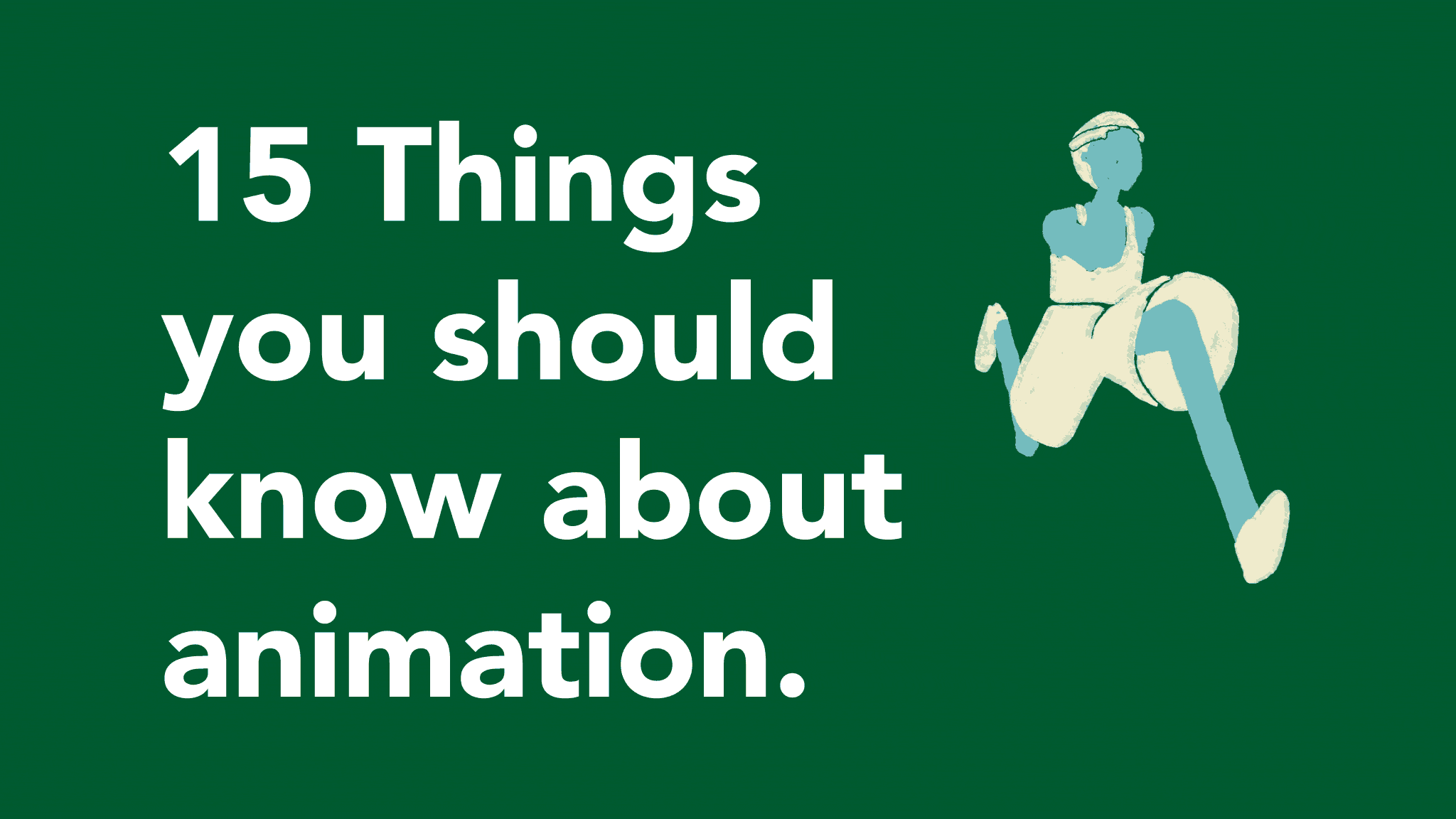
Table of Contents

01. Animation is whatever you imagine!
You can literally do whatever you want! Don’t be bound to the rules that play in our world. If you want to ride a dinosaur on a wave in space… you can! Use that to your advantage and invent your story accordingly.
Don’t be bound to the rules in our world!
02. It can deliver lots of information.
By using graphics, text, colours and sound Animation is perfect for showing big amounts of information in a short time. More of that information is retained because it stimulates visually, auditorily and verbally. This makes it perfect for educational use, think tutorials or e-learning. With people even stuffing their time-off full of activities, they’d rather spend less time on figuring something out.
03. Language can be changed on the fly.
using different languages is possible in a natural way by just rerecording in different languages. This makes for very versatile content that can be used and reused for different market and audiences.
04. Reuse content
Everything you make can be reused and remade into different pieces of content. For example use a close up of your character as a poster, loop a scene and make a spotify canvas cut or even use the style of your animation to make a webcomic.
05. Sound & animation
Animation is made for sound, they can go hand in hand. You have total control of timing, this can make for a perfect combination of sound and visuals.

06. Use your own story to your advantage
When working with an animated video, or any video for that matter, don’t fall into the trap of doing the same thing as everyone else. People create blindness for something they see often. Highlight what makes you stand out in your videos, this way you’ll be seen, recognized and remembered.
People create blindness for something they see often.
07. Stories are your friend
Stories are one of the purest forms of communication. If you think about it, exchanging stories is what we do in most conversations. Our brains are wired to remember stories more than facts. Use stories in your video’s and people will likely be more interested, remember more and engage more with your content. Ask for help on your scenario, an experienced animator, director or screenwriter should be able to see how your scenario can be more effective in solving your problem.
08. Maximize for success
Most of the times your project starts with a problem. Examples: You have a song about mars but don’t have a spaceship to travel to mars, what do you put in the video now? Your new product is the best product ever but your clients can’t seem to get the hang of it quickly. Be clear about your problem and make every decision in the function of that problem. You might need a whole world of characters and settings but a simple text might be enough. Your solution should be in balance with your problem, the bigger the problem the bigger the solution has to be. Mind this when setting your budget and deadline. Don’t cut yourself short
09. Quality vs budget.
Our quality assessment is usually influenced by our time and budget requirements. I like to think about it like this: if the low to high quality is sitting on a 1-10 scale, you probably don’t want anything less than a five – medium quality. To me, medium quality means it’s ok and it does a job. High quality is detailed, finessed, and tailored to your specific needs. If you have a lower budget, you might have to settle for a 6 rather than a 9 or a 10. If you need something done really quickly and you just need something animated, maybe even a 5 is an ok standard for you. Not everything has to be perfect all the time, and it’s important to consider when certain standards are reasonable for you.

10. What style should you use?
There’s a variety of styles you can choose from. Keep in mind which problem you want to fix when making that decision. Here are the four most used techniques.
Motion graphics are great for passing on information. They can visualise complex information in a clear way, by using things like icons, infographics, text, colours etc..
2D animation brings drawings to life. With this technique you draw the movement of your subject frame by frame. When combining these frames sequentially you create the illusion of movement. This is only limited to what you can draw, making it possible to do everything you can imagine. Think Spirited Away or Lion King.
3D animation is iterative, meaning you can have a version of something and make changes without having to start from scratch. For example camera angle, texture, color, shape etc.. It can have a very wide range in styles and can go from architecture to pixar movies.
Stop motion brings physical objects or characters to life. It can be thought of as a series of still photographs of objects or characters that are incrementally moved with every photograph. By sequentially playing those photographs in quick succession it creates the sense of movement. Wallace And Gromit or The Fantastic Mr. Fox are great examples of this technique.
11. The importance of a good brief.
Doesn’t matter who you work with, make a good brief. Have all your info in one place, this prevents mistakes during the project itself. Here is a questionnaire I use myself with my clients, even if you decide to work with someone else it might make the process more easy. Make a list of everything you need: Don’t ask at the last moment, ensure you know what you want and communicate that in advance.
Have all your info in one place!

12. How long does animation take?
Animation makes it possible to show everything you want. Yet in comparison to live-action, you can’t point your camera at a building that’s already there. Everything you do has to be thought of, drawn and animated. This can take time, a lot of time… Make sure you brief your animator in a timely fashion. And don’t forget post-production, adding sound, music and voice-over adds to your overall project time.
Timing cheat sheet (one minute animation)
13. Who’s watching the video?
A video is only as good as its viewer. If you make a genius video but no one sees it you wasted your time. Find someone to advertise your video in the right way to the right people. Facebook, instagram or youtube ads make it possible to show your content to people that are likely to like it. If you’re looking to advertise your content I know a guy 😉

14. How to find the right animators?
Like I said before, start with your problem. What type of creative will solve that problem best. Which style or technique will work best with what you wish to accomplish? Look for existing projects that have the DNA of what you’re looking for. Or see if surtain competitors use video in ways that work for them. Take these examples and look for a vendor that has done similar projects. Or someone that speaks the same figurative language you do. Look at your deadline, budget and quality you want. Decide accordingly. You might want something done quick and dirty, and you could go for someone that makes more generic content but gets the job done quick. Or maybe you want the highest quality in which case you might go with someone that has a lot of experience and thus is possibly more expensive. Either way keep in mind you have three possibilities good, fast and cheap but you can only choose two.
Keep in mind you have three possibilities good, fast and cheap but you can only choose two.
15. Where do you find animators?
If you don’t know where to look the following places can be a start: Use Facebook groups to ask for referrals on people that might fit your project. There might be someone in your network that is perfect or knows the perfect person. Instagram is also a great resource, you can search by hashtags with styles or check out similar profiles. Behance also works. Look at who made the examples you liked. Or ask the guy who wrote this, hint, hint.



